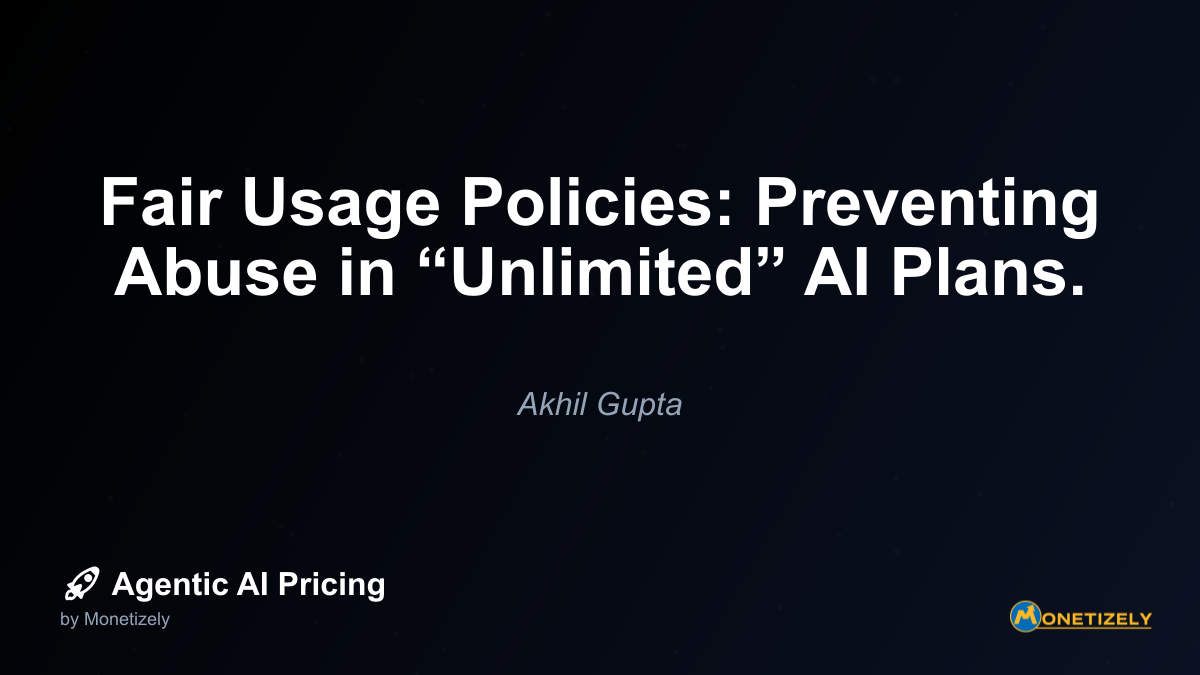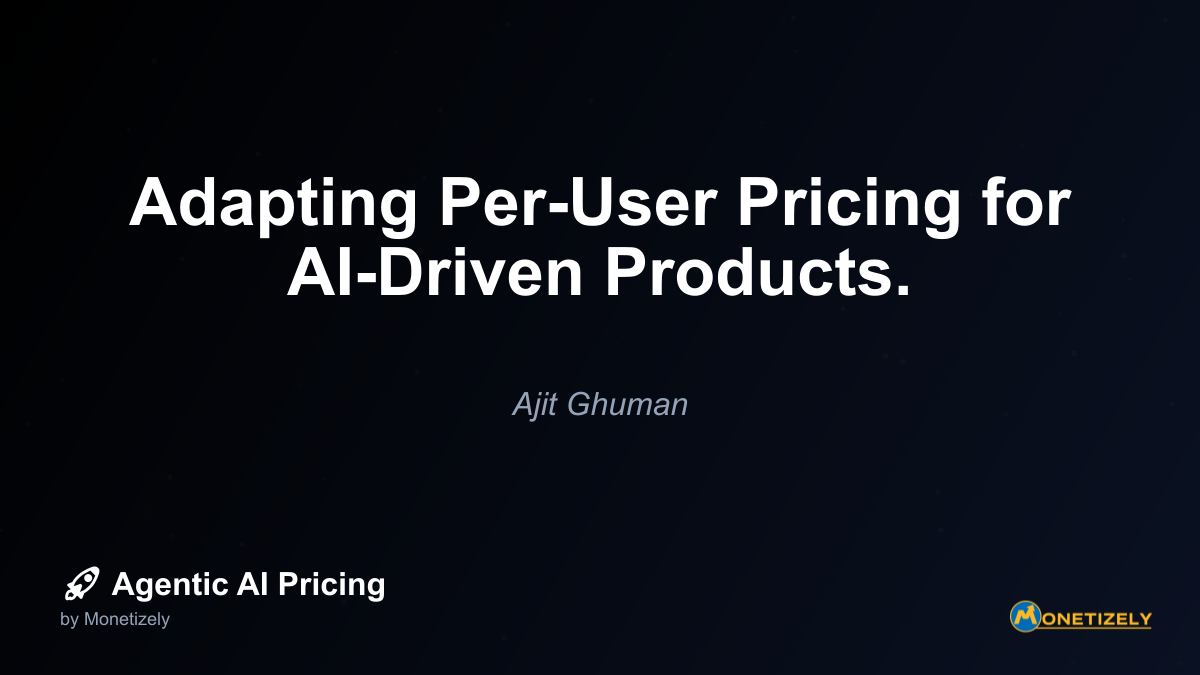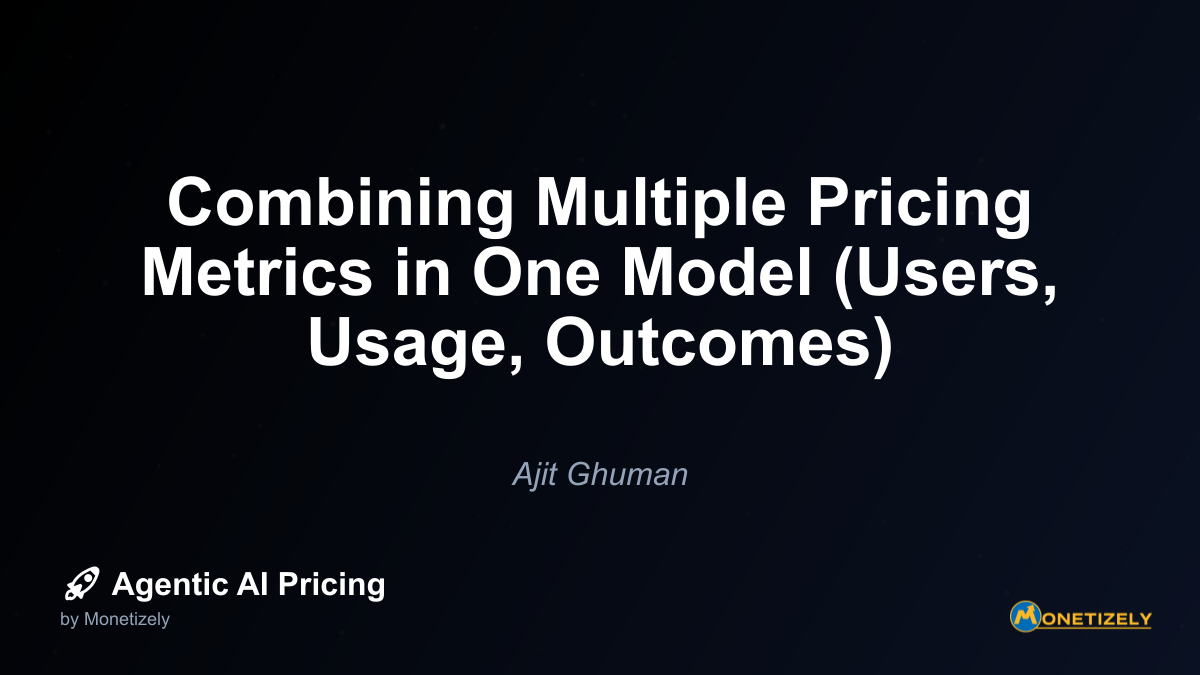· Akhil Gupta · Agentic AI Pricing Strategies · 5 min read
Fair Usage Policies: Preventing Abuse in “Unlimited” AI Plans.
AI and SaaS Pricing Masterclass
Learn the art of strategic pricing directly from industry experts. Our comprehensive course provides frameworks and methodologies for optimizing your pricing strategy in the evolving AI landscape. Earn a professional certification that can be imported directly to your LinkedIn profile.

Legal and Ethical Considerations in Fair Usage Policies
Beyond the practical aspects, fair usage policies carry legal and ethical implications that AI service providers must consider:
Transparency Requirements
Regulatory frameworks increasingly demand transparency in marketing claims. The Federal Trade Commission (FTC) in the United States, for example, scrutinizes “unlimited” claims that contain significant restrictions. Similar regulations exist in the European Union under consumer protection laws.
To meet these requirements, providers should:
- Clearly disclose limitations in marketing materials
- Make FUPs easily accessible before purchase
- Use plain language that average consumers can understand
- Avoid burying critical limitations in legal text
Ethical Pricing Communication
Beyond legal compliance, there’s an ethical obligation to communicate pricing structures honestly. This is particularly important in the AI industry, where many services and their cost structures are novel to consumers.
Ethical considerations include:
- Avoiding bait-and-switch tactics that advertise unlimited service but deliver heavily restricted access
- Providing tools that help customers understand and manage their usage
- Ensuring that FUPs genuinely target outlier usage, not typical customer behavior
- Being transparent about changes to policies over time
Balancing Customer Experience and Business Needs
The most successful fair usage implementations find the sweet spot between protecting the business and delivering on customer expectations. This balance typically involves:
- Setting thresholds well above average usage patterns
- Focusing restrictions on behaviors that genuinely threaten service quality
- Creating pathways for legitimate high-usage customers to access appropriate plans
- Continuously refining policies based on actual usage data and customer feedback
Real-World Examples of Fair Usage in AI Services
To understand how these principles manifest in practice, let’s examine how several leading AI services implement fair usage policies:
ChatGPT Plus
OpenAI’s subscription service for ChatGPT illustrates several FUP best practices:
- Clear messaging about “high-speed access” rather than truly unlimited usage
- Transparent message limits that reset on a defined schedule
- Graduated response that throttles rather than blocks access completely
- Options for higher-volume users to move to enterprise plans
When usage surged beyond sustainable levels in 2023, OpenAI temporarily implemented additional restrictions but communicated these changes clearly to subscribers.
GitHub Copilot
Microsoft’s AI coding assistant takes a different approach:
- “Unlimited” positioning with fair use restrictions on excessive automation
- Focus on preventing non-interactive use rather than limiting normal developer activity
- Clear distinction between personal and organizational usage patterns
- Integration with existing GitHub rate limiting infrastructure
This approach acknowledges that while most developers have natural usage limits, the service needs protection against automated scraping or API abuse.
Midjourney
This AI image generation service implements a tiered approach to fair usage:
- Basic plan with clearly defined monthly generation limits
- “Unlimited” plans that still include reasonable use provisions
- Time-based throttling (relaxation time) rather than hard caps
- Commercial usage distinctions within the fair use framework
By focusing on relaxation time between generations rather than absolute limits, Midjourney maintains the spirit of unlimited access while protecting against server overload.
Designing an Effective Fair Usage Policy for Your AI Service
If you’re developing or managing an AI service with “unlimited” elements, consider these steps when creating your fair usage policy:
1. Analyze Your Cost Structure
Begin by understanding exactly what drives your costs:
- Per-request computational expenses
- Storage requirements
- Bandwidth consumption
- API call costs to upstream providers
- Support and operational overhead
This analysis should identify which usage patterns most significantly impact profitability and sustainability.
2. Study Actual Usage Patterns
Before setting thresholds, gather data on how customers actually use your service:
- Average usage across your customer base
- Usage distribution (identifying power users)
- Usage patterns over time (daily, weekly, monthly)
- Correlation between usage and customer value
This data helps establish thresholds that affect only true outliers while protecting normal users.
3. Create Clear, Tiered Responses
Develop a graduated approach to enforcement:
- Define “normal,” “heavy,” and “excessive” usage tiers
- Create appropriate responses for each tier
- Establish monitoring and notification systems
- Develop escalation procedures for persistent issues
4. Craft Transparent Communication
Develop clear messaging around your fair usage policy:
- Plain-language explanations of core limitations
- Easily accessible complete policy documentation
- Usage dashboards or monitoring tools for customers
- Proactive notification systems
5. Implement Feedback Mechanisms
Create channels for addressing edge cases and gathering insights:
- Exception request processes for legitimate high-volume needs
- Feedback collection on policy impact
- Regular review and adjustment procedures
- Upgrade paths for consistently high-usage customers
The Future of Fair Usage in AI Services
As AI technologies and business models continue to evolve, fair usage policies will likely undergo significant changes:
More Sophisticated Measurement
Rather than simple volume metrics, future FUPs may incorporate:
- Value-based usage measurement (impact of queries rather than quantity)
- Intent-based distinctions (differentiating exploratory use from production)
- Outcome-focused metrics (results achieved rather than resources consumed)
Dynamic and Personalized Policies
Static, one-size-fits-all policies may give way to more flexible approaches:
- Customized thresholds based on individual usage patterns
- Machine learning-powered anomaly detection for abuse identification
- Dynamic adjustment based on system load and capacity
Integration with Value-Based Pricing
As the industry matures, we may see hybrid models that better align with value creation:
- Base “unlimited” access with fair use provisions for standard tasks
- Premium pricing for specialized or high-value AI capabilities
- Outcome-sharing models for high-ROI applications
Conclusion: Balancing Promises and Practicality
Fair usage policies represent a necessary compromise in the AI service ecosystem. While “unlimited” offers powerful marketing appeal, the economic realities of AI service provision require boundaries that protect both the provider and the broader customer base.
The most successful implementations strike a careful balance—setting thresholds high enough to accommodate normal usage while preventing the extreme outliers that could undermine service quality or economic viability. When communicated transparently and implemented thoughtfully, these policies can maintain the spirit of the unlimited promise while ensuring sustainable operations.
For AI service providers, the key lies in authenticity and clarity. An “unlimited” service with reasonable fair use provisions, clearly explained, builds more customer trust than one that promises the impossible and fails to deliver. As the AI industry matures, we can expect fair usage policies to become increasingly sophisticated, potentially incorporating value-based metrics and dynamic thresholds that better align with both customer needs and business realities.
In this evolving landscape, the providers who thrive will be those who view fair usage not merely as a protective measure, but as part of a broader commitment to transparent, sustainable, and mutually beneficial customer relationships.
Co-Founder & COO
Akhil is an Engineering leader with over 16+ years of experience in building, managing and scaling web-scale, high throughput enterprise applications and teams. He has worked with and led technology teams at FabAlley, BuildSupply and Healthians. He is a graduate from Delhi College of Engineering and UC Berkeley certified CTO.
Pricing Strategy Audit
Let our experts analyze your current pricing strategy and identify opportunities for improvement. Our data-driven assessment will help you unlock untapped revenue potential and optimize your AI pricing approach.




